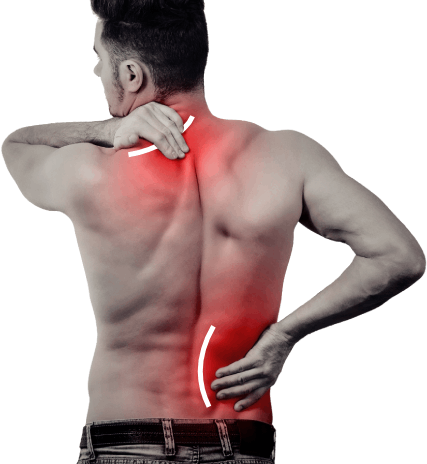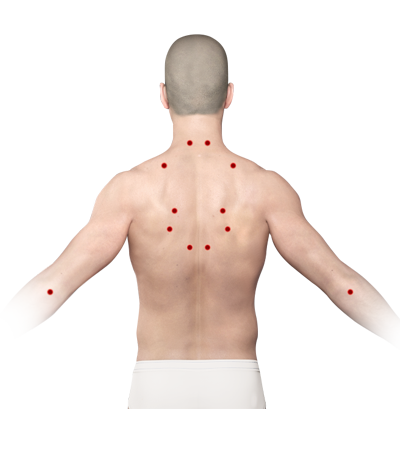Myofascial Release
Myofascial Release Massage In Seattle
Do you suffer from chronic pain? Maybe you have been treated by different practitioners to address this disabling problem? Perhaps you’ve already seen a physical therapist and you saw some improvements and results but are still feeling a low-grade ache in your back, neck, arm, or leg. Introducing Myofascial massages in Seattle, the ideal solution to your chronic pain issues.
Also Check our relaxation massage
Did The Seattle Therapist You Worked With Assess Your Myofascial System?
Do you suffer from chronic pain? Maybe you have been treated by different practitioners to address this disabling problem? Perhaps you’ve already seen a physical therapist and you saw some improvements and results but are still feeling a low-grade ache in your back, neck, arm, or leg. Introducing Myofascial massages in Seattle, the ideal solution to your chronic pain issues.
The majority of people suffering from pain and lack of motion could have fascial restrictions and are not diagnosed at all, often accepting the dreaded “you are gonna have to live with this”. Therefore, it’s important to consider options, like Myofascial release massages, to tackle the underlying problems behind chronic pain.
Part of the problem is that Myofascial restrictions are not picked up and don’t show on imaging tests such as X-ray, MRI, and CAT-scan, and the patient is being left with no diagnosis/ cause for their pain and symptoms. Most physical therapists are also not trained in assessing the myofascial system and often, fascial restrictions remain even after a round of physical therapy treatments. Opting for Myofascial massages in Seattle allows you to manage chronic pain, even when it doesn’t get diagnosed by health professionals.
So What Is Fascia?
Fascia is a connective tissue whose role is to support our bodies. It attaches to, surrounds and links our muscles, nerves, bones, blood vessels and organs. It can be superficial (directly under your skin) or deep, and its fibers blend with your skin, muscles, bones… It is made of collagen fibers, which are tough and hard to stretch, as well as elastin fibers, which are much more stretchable. It runs from the top of your head, to the tip of your toes, which is why a restriction in one area can create tension on the fascia in another. You can picture it as a wool sweater: if you pull on one side of the sweater toward the waist, you will be feeling a lot of pulling and tension around your neck on the opposite side.
The myofascial system plays an important role in the support and defining the shape of your body. There exist a high concentration of fascial tissue around your diaphragm (your breathing muscle), your pelvis, the base of your skull and at the top of your thoracic cavity, which is the top of your rib cage, base of your neck, around your collar bone and your top ribs.
Normally, your fascia is able to move and stretch without restrictions, and create room for your nerves, blood and lymphatic vessels to run through your body to go from one point to another. Fascia is innervated, therefore a possible pain generator, and a large amount of mechanoreceptor are also found in myofascial tissue, which proves the fascial system has an important sensory role.
Patients often describe a dull, aching and deep pain that can go from low grade to severe, and they often feel that their pain is affected by different part of their body.
 Button
Button
With injury, or (big or small) trauma, stress, or inflammation, restrictions in the fascia occur. Scar tissue is formed, hardens and create tension and pressure on the fascia and the structures it attaches to. These restrictions can be local to the site of injury or exert tension and pressure on area further in the body, that might not seemed related at all with the location of the trauma. For example, I have treated multiple patients with complaint of back pain that did not improved until myofascial release was performed over their abdominal cavities. These patients had all one thing in common: abdominal surgeries, which likely left significant scarring and created tension over the myofascial structure attaching to their spine. This is one example of how chronic pain suffering patient’s could be misdiagnosed and go for years with their symptoms and complaints with no one addressing the real source of their problem.
 Button
Button
Myofascial release is the treatment of choice for fascial restrictions. Even though the practitioner uses both hands in a skin to skin contact manner, it is very different than a massage: it uses very light pressure and stretching techniques to release these restrictions. You may also be treated in very different area that may not seem related to your condition.
I would encourage any new or old patient to seek care from a practitioner that is trained in myofascial release. Especially if you ‘ve have been treated and your symptoms have not changed or fully resolved.
Do you suffer from chronic pain? Maybe you have been treated by different practitioners to address this disabling problem? Perhaps you’ve already seen a physical therapist and you saw some improvements and results but are still feeling a low grade ache in your back, neck, arm or leg.
Address
509 Olive Way #1658 Seattle Washington 98101
Services
Business Hours
- Mon - Fri
- -
- Saturday
- Closed
- Sunday
- -
Sign up Get Your Free Weekly Tips and monthly promotions!
Weekly Tips
We will get back to you as soon as possible.
Please try again later.
All Rights Reserved | Alvarado’s Massage
